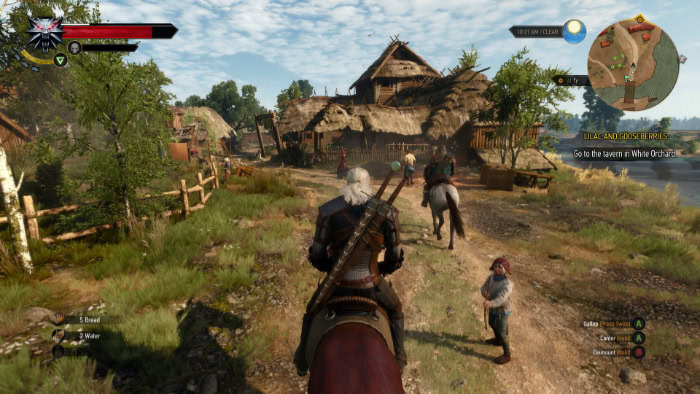PvE vs. PvP: Which Fight is Yours?

The greatest threat in a game is not a dragon with programmed attacks, but another player with a mind of their own. This is the central conflict between PvE and PvP.
One side tests your ability to master systems and execute strategies against a predictable foe. The other tests your reflexes, cunning, and ability to adapt against a person who is just as unpredictable as you are.
Your choice shapes the entire game, from the skills you must develop to the social circles you join.
Defining the Core Concepts
The acronyms PvE and PvP represent the two fundamental types of conflict found in multiplayer games. They answer a simple question: who is the enemy? One mode pits players against computer-controlled adversaries in a structured world, while the other puts them in direct competition with other people.
The specific rules governing how and when players can fight each other further shape the experience, creating distinct environments that cater to different player preferences.
Player Versus Environment (PvE)
Player versus Environment describes gameplay focused on overcoming challenges created by the game itself. The opposition consists of artificial intelligence, or AI, which operates on predictable scripts and behaviors.
PvE encounters are often highly structured, taking place in dungeons, large-scale raids, or as part of a game's main story. Success requires teamwork, communication, and learning the patterns of AI enemies to execute a coordinated strategy.
Time-limited events and world quests also fall under this category, providing repeatable content where players can practice their skills and earn rewards in a controlled setting.
Player Versus Player (PvP)
Player versus Player shifts the focus to direct competition against other human opponents. Unlike the predictable nature of AI, human players are creative, fallible, and capable of surprising tactics.
PvP combat is therefore a contest of reflexes, strategy, and psychological gamesmanship. Most games that offer both modes provide distinct PvP activities, such as small-team arena matches, large-scale battlegrounds, or formal duels.
The objective is not to overcome a scripted encounter but to outmaneuver and outperform another person.
Mode Separation and Server Rules
Developers implement specific rulesets to manage how players interact. Many online games use separate servers to create different play environments.
A PvE server, for instance, typically restricts non-consensual combat, creating a safer space for players who wish to avoid unsolicited fights. A PvP server does the opposite, often allowing open conflict in most areas of the world.
Other games use a hybrid approach on a single server, where players can “opt-in” or flag themselves for PvP, giving them control over when they are open to attack. These design choices establish the baseline for player interactions and define the level of risk in the game world.
Contrasting Skill and Gameplay Demands

While both PvE and PvP operate within the same game engine, the skills required to succeed in each mode are fundamentally different. The nature of the opponent, either a predictable computer or an unpredictable person, dictates the entire flow of combat.
PvE: Mastering the System
Success in Player versus Environment is a test of preparation and execution. Since AI enemies operate on set scripts and attack patterns, the primary challenge is learning the mechanics of an encounter.
Players study boss fights, optimize their character builds with the right gear and abilities, and coordinate with their team to execute a specific strategy. The gameplay loop revolves around mastering a predictable sequence of events.
Objectives are usually clear, such as defeating a boss or surviving waves of enemies, and performance is measured by efficiency and the ability to perform your role flawlessly within the group.
PvP: Outsmarting the Opponent
Player versus Player exchanges scripted encounters for the chaos of human psychology. Since a human opponent can change their strategy at any moment, adaptation is the most valuable skill.
Victory often depends on reacting to an opponent's moves in real-time. Effective use of abilities that interrupt or control the other player is critical to gaining an advantage.
Furthermore, PvP introduces a layer of mind games; bluffing, baiting abilities, and anticipating your opponent's next move are all part of the contest. The constant pressure requires a high level of situational awareness and quick decision-making.
Learning Curves and Difficulty
Many people perceive PvP as the more difficult mode, largely due to its unpredictability. In a PvP match, especially in smaller teams, individual mistakes are more visible and can quickly lead to defeat.
There is no script to memorize, only principles to apply against a constantly changing threat. PvE's difficulty, by contrast, is rooted in complexity and coordination.
High-level raids demand near-perfect execution of intricate mechanics from a large group of players. The challenge is not in figuring out what the boss will do, but in having every member of the team perform their role correctly, often for a long and grueling fight.
The Social Environment and World Rules
The decision between PvE and PvP extends beyond combat mechanics; it shapes the entire social atmosphere of a game. How players form groups, interact with strangers, and experience the world is directly influenced by the rules of engagement.
Cooperative Groups Versus Small Strike Teams
Player versus Environment activities often encourage the formation of large, cooperative groups. Raids can require anywhere from ten to forty players working together, with each person assigned a specific role.
Coordination is typically planned in advance, and success depends on the entire group's ability to follow a strategy. In this setting, the impact of a single player's performance is distributed across the team. In contrast, Player versus Player competition frequently revolves around small teams, such as in two or three-person arena matches.
In these tight-knit groups, individual skill carries immense weight, and a single mistake can determine the outcome. The emphasis shifts from large-scale coordination to personal accountability and quick synergy with a few teammates.
Consent and the Rules of Engagement
The concept of consent is a major dividing line between play styles. In PvE-centric servers or game modes, players are generally protected from unsolicited attacks from others.
Conflict is an opt-in experience, confined to designated dueling areas or specific battlegrounds. This creates a safer, more predictable environment for questing and exploration.
Alternatively, games with open-world PvP or faction-based conflict operate differently. In these worlds, players belonging to opposing sides can often attack each other on sight in contested territories.
Such systems create a persistent feeling of tension, where a routine task can erupt into a spontaneous fight for survival.
The Risk of Griefing and Unwanted Conflict
Environments with open and non-consensual PvP introduce the risk of griefing, which is behavior intended to harass other players rather than to win a fair fight. Common examples include high-level players repeatedly killing low-level players in a practice known as “ganking,” or “corpse camping,” where a player prevents their defeated opponent from reviving and continuing to play.
To address this, developers implement systems to mitigate unwanted conflict. Many games offer designated safe zones, like major cities, where combat is disabled.
Providing separate PvE-oriented servers or rulesets gives players a direct way to avoid these situations entirely, allowing them to engage with the world on their own terms.
Progression, Rewards, and Game Balance

The ways players grow in power and earn rewards differ dramatically between PvE and PvP, offering distinct forms of satisfaction. One mode provides a structured path of advancement tied to overcoming scripted challenges, while the other offers rewards based on competitive performance against peers.
PvE: A Path of Measured Advancement
Progression in Player versus Environment is often a steady and predictable process. Players advance by completing narrative quests, defeating powerful bosses, and accumulating better equipment.
The reward loop is straightforward: mastering an encounter rewards time and effort with tangible power gains and cosmetic items. Success is often marked by earning achievements, unlocking new story chapters, or finally acquiring a coveted piece of gear after multiple attempts at a difficult raid.
This model provides a clear sense of growth, as a player's character becomes visibly stronger and more capable over time. The satisfaction comes from conquering the game's systems and seeing direct returns on the time invested.
PvP: The Pursuit of Competitive Recognition
In Player versus Player, progression is less about accumulating gear and more about demonstrating skill. The most immediate reward is the competitive validation that comes from defeating another human opponent.
This is often formalized through systems like leaderboards, ranking tiers, and exclusive titles that signify a player's standing within the community. While gear can play a role, the ultimate goal is personal improvement and the expression of skill against an adaptive, intelligent foe.
Rewards are frequently cosmetic, such as unique armor appearances or mounts, allowing victors to display their accomplishments without creating a massive power imbalance. The motivation is the pursuit of mastery over an opponent, not just over a system.
The Challenge of Game Balance
Supporting both PvE and PvP within a single game presents significant design challenges. An ability or item that is perfectly fine for a scripted boss fight might be frustrating or overpowered when used against a human player.
For example, long-lasting stun abilities are manageable for AI but can ruin the experience in a competitive match. As a result, developers often must tune abilities separately for each mode or even create gear that functions differently depending on the context.
These necessary adjustments create development overhead and can lead to friction. The cost and effort required to produce a new raid are very different from those needed for a new arena, sometimes causing one part of the player base to feel that their preferred mode is being neglected.
Choosing Your Path and Combining Modes
Deciding between PvE and PvP is not always a permanent or exclusive choice. Your preference may depend on your mood, your long-term goals, or the specific game you are playing.
Many games offer ways to experience both, and some even blend the two into a single, cohesive experience.
Guided Play Versus Unpredictable Competition
The choice ultimately comes down to what kind of challenge you find most rewarding. If you enjoy atmospheric world-building, following a story, and collaborating with a team to overcome intricate, puzzle-like encounters, then a PvE focus is likely your best fit.
The satisfaction in PvE comes from methodical problem-solving and achieving mastery over a game's systems. If you are instead drawn to the adrenaline of high-stakes competition and thrive on outmaneuvering a thinking opponent, then you will likely prefer PvP.
The appeal of PvP is its raw, unscripted nature, where victory is earned through quick thinking and superior tactical skill.
Exploring Hybrid PvPvE Modes
Some games erase the line between these two modes by creating hybrid “Player versus Player versus Environment” experiences. In a PvPvE setting, players must contend with both environmental threats and hostile human opponents simultaneously.
For example, a group might be fighting a powerful AI boss while fending off an enemy team trying to steal their kill and claim the rewards. These scenarios are common in survival games and specific zones within MMOs.
The dynamic creates a unique tension where alliances can be temporary, and awareness of both the environment and other players is crucial for survival.
Using PvE as a Stepping Stone
For those curious about PvP but intimidated by its steep learning curve, PvE offers a practical training ground. Player versus Environment content provides a low-pressure setting to learn the fundamentals of your character.
You can master your abilities, understand cooldowns, and practice movement and positioning without the immediate threat of a highly skilled human opponent. Building a strong foundation of your character's mechanics in PvE can make the transition into PvP much smoother.
When you eventually enter a competitive match, you can focus on learning to fight other players instead of learning your own class at the same time.
Conclusion
While built on the same game mechanics, Player versus Environment and Player versus Player represent two opposed philosophies of conflict. One rewards mastery over predictable systems through structured cooperation, while the other celebrates victory over unpredictable humans through individual skill and adaptation.
The “best” mode is not a feature of the game but a matter of personal preference. It is a choice between the satisfaction of a flawlessly executed strategy against a machine and the raw thrill of outsmarting a human opponent.
For those who enjoy elements of both, hybrid PvPvE designs offer a compelling middle path, blending environmental dangers with player conflict to create a dynamic space where cooperation and competition coexist.


